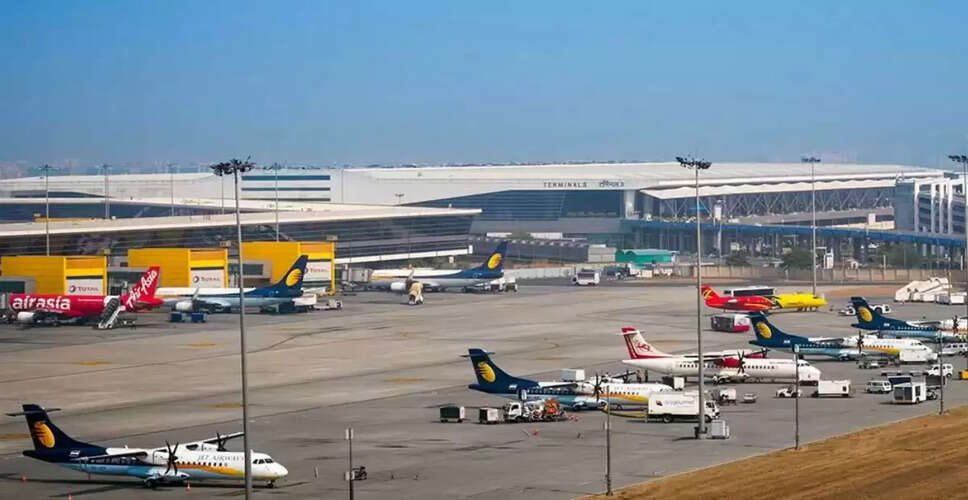DGCA Identifies Major Safety Issues at Airports, Urges Immediate Action

Safety Assessment Reveals Critical Lapses
In a recent surveillance operation, the Directorate General of Civil Aviation (DGCA) evaluated the aviation sector to enhance safety measures and uncovered significant safety deficiencies at major airports, including those in Mumbai and Delhi.
The findings have led the aviation authority to instruct relevant operators to take corrective measures within a week. The DGCA's inspection highlighted issues such as ineffective monitoring and insufficient corrective actions regarding identified defects.
This safety evaluation is part of an initiative that began with an order issued on June 19. Two teams, led by the Joint Director General of DGCA, conducted inspections during nighttime and early morning hours, focusing on critical aviation operations. Areas of concern included flight operations, airworthiness, ramp safety, air traffic control (ATC), communication, navigation, and pre-flight medical assessments.
Repeated Defects and Equipment Failures
During the inspections, numerous instances were noted where previously reported defects in aircraft systems re-emerged without proper rectification, indicating a lack of effective monitoring. Additionally, various ground handling tools, such as baggage trolleys and BFL units, were found to be out of service.
Multiple occurrences of recurring defects on aircraft were documented, showcasing inadequate monitoring and corrective actions. Ground handling equipment, including baggage trollies, was also reported as unserviceable, and maintenance procedures were not adhered to.
Negligence in Maintenance Procedures
In several cases, work orders were ignored, and tool control protocols were not followed. Safety measures outlined in the Aircraft Maintenance Manual (AMM) were frequently overlooked. Aircraft Maintenance Engineers (AMEs) were found to be neglecting necessary defect rectifications, and critical fault reports were not recorded in technical documents. Instances of unsecured life vests and damaged corrosion-resistant tape on wing components were also noted.
Specific issues included failure to follow work orders during aircraft maintenance, unserviceable thrust reverser systems, and improperly secured life vests. The corrosion-resistant tape on the right winglet was also found damaged, raising safety concerns.
Airport-Level Deficiencies Identified
Additional shortcomings were observed at the airport level, such as faded runway centerline markings, malfunctioning green center lights on rapid exit taxiways, and outdated obstruction limitation data that had not been updated for over three years despite new constructions around the aerodrome.
At one airport, the runway centerline marking was noted to be faded, and the rapid exit taxiway lights were not functioning correctly. Furthermore, vehicles in the ramp area were found operating without speed governors, leading to the cancellation of their Airside Vehicle Permits (AVPs) and suspension of drivers' Airside Driving Permits (ADPs).
Simulator and Flight Delays
A simulator inspection revealed discrepancies with the aircraft configuration and outdated software, raising concerns about training standards. In a separate incident, a domestic flight was delayed due to worn-out tires and was only cleared for takeoff after necessary repairs were made.
All findings from the surveillance have been communicated to the relevant operators, who have been instructed to implement corrective actions within seven days. The DGCA has emphasized that such thorough surveillance will continue to proactively identify and address safety risks within India's civil aviation sector.
